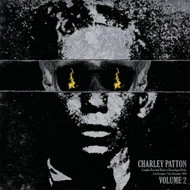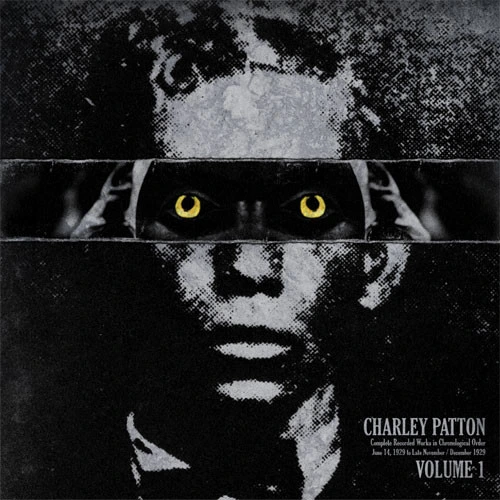180 Gram Vinyl! Father of the Delta Blues! Influenced Howlin' Wolf, John Lee Hooker and Many More!
Charley Patton, also known as Charlie Patton, was an American Delta blues musician. He is considered by many to be the "Father of the Delta Blues", and is credited with creating an enduring body of American music and personally inspiring just about every Delta blues man. Musicologist Robert Palmer considers him among the most important musicians that America produced in the twentieth century. Many sources, including musical releases and his gravestone, spell his name Charley even though the musician himself spelled his name "Charlie."
In 1900, his family moved to the legendary 10,000-acre Dockery Plantation sawmill and cotton farm near Ruleville, Mississippi. It was here that both John Lee Hooker and Howlin' Wolf fell under the Patton spell as well as Willie Brown, Tommy Johnson, and Fiddlin' Joe Martin. At Dockery, Charley fell under the tutelage of Henry Sloan, who had a new, unusual style of playing music which today would be considered very early blues. Charley followed Henry Sloan around, and, by the time he was about 19, had become an accomplished performer and songwriter in his own right, having already composed "Pony Blues," a seminal song of the era.
Robert Palmer describes Patton as a "jack-of all-trades bluesman" who played "deep blues, white hillbilly songs, nineteenth-century ballads, and other varieties of black and white country dance music with equal facility". He was extremely popular across the Southern United States and also performed annually in Chicago, Illinois and, in 1934, New York City. In contrast to the itinerant wandering of most blues musicians of his time, Patton played scheduled engagements at plantations and taverns. Long before Jimi Hendrix impressed audiences with flashy guitar playing, Patton gained notoriety for his showmanship, often playing with the guitar down on his knees, behind his head, or behind his back. Although Patton was a small man at about 5 foot 5, his gravelly voice was rumored to have been loud enough to carry 500 yards without amplification. Patton's gritty bellowing was a major influence on the singing style of his young friend Chester Burnett, who went on to gain fame in Chicago as Howlin' Wolf.
Charley Patton's Volume 2 from Third Man's highly-anticipated Document Records reissue series on black 180-gram vinyl, remastered by Document's very own Gary Atkinson features brand new artwork by Grammy-award-winning designer Rob Jones.
Features:
180 Gram Vinyl
Remastered by Document's very own Gary Atkinson
Brand New Artwork by Grammy-Award-Winning Designer Rob Jones
Selections:
Side A:
1. Elder Greene Blues (take 1)
2. Elder Greene Blues (take 2)
3. Circle Round The Moon
4. Devil Sent The Rain Blues
5. Mean Black Cat Blues
6. Frankie and Albert
7. Some These Days I'll Be Gone (take 1)
8. Some These Days I'll Be Gone (take 2)
Side B:
1. Green River Blues
2. Farrell Blues
3. Come Back Corrina
4. Hammer Blues (take 1)
5. Hammer Blues (take 2)
6. Magnolia Blues
7. When Your Way Gets Dark
8. Heart Like Railroad Steel
Charley Patton, also known as Charlie Patton, was an American Delta blues musician. He is considered by many to be the "Father of the Delta Blues", and is credited with creating an enduring body of American music and personally inspiring just about every Delta blues man. Musicologist Robert Palmer considers him among the most important musicians that America produced in the twentieth century. Many sources, including musical releases and his gravestone, spell his name Charley even though the musician himself spelled his name "Charlie."
In 1900, his family moved to the legendary 10,000-acre Dockery Plantation sawmill and cotton farm near Ruleville, Mississippi. It was here that both John Lee Hooker and Howlin' Wolf fell under the Patton spell as well as Willie Brown, Tommy Johnson, and Fiddlin' Joe Martin. At Dockery, Charley fell under the tutelage of Henry Sloan, who had a new, unusual style of playing music which today would be considered very early blues. Charley followed Henry Sloan around, and, by the time he was about 19, had become an accomplished performer and songwriter in his own right, having already composed "Pony Blues," a seminal song of the era.
Robert Palmer describes Patton as a "jack-of all-trades bluesman" who played "deep blues, white hillbilly songs, nineteenth-century ballads, and other varieties of black and white country dance music with equal facility". He was extremely popular across the Southern United States and also performed annually in Chicago, Illinois and, in 1934, New York City. In contrast to the itinerant wandering of most blues musicians of his time, Patton played scheduled engagements at plantations and taverns. Long before Jimi Hendrix impressed audiences with flashy guitar playing, Patton gained notoriety for his showmanship, often playing with the guitar down on his knees, behind his head, or behind his back. Although Patton was a small man at about 5 foot 5, his gravelly voice was rumored to have been loud enough to carry 500 yards without amplification. Patton's gritty bellowing was a major influence on the singing style of his young friend Chester Burnett, who went on to gain fame in Chicago as Howlin' Wolf.
Charley Patton's Volume 2 from Third Man's highly-anticipated Document Records reissue series on black 180-gram vinyl, remastered by Document's very own Gary Atkinson features brand new artwork by Grammy-award-winning designer Rob Jones.
Features:
180 Gram Vinyl
Remastered by Document's very own Gary Atkinson
Brand New Artwork by Grammy-Award-Winning Designer Rob Jones
Selections:
Side A:
1. Elder Greene Blues (take 1)
2. Elder Greene Blues (take 2)
3. Circle Round The Moon
4. Devil Sent The Rain Blues
5. Mean Black Cat Blues
6. Frankie and Albert
7. Some These Days I'll Be Gone (take 1)
8. Some These Days I'll Be Gone (take 2)
Side B:
1. Green River Blues
2. Farrell Blues
3. Come Back Corrina
4. Hammer Blues (take 1)
5. Hammer Blues (take 2)
6. Magnolia Blues
7. When Your Way Gets Dark
8. Heart Like Railroad Steel



 Turntable Accessories
Turntable Accessories Headphone Accessories
Headphone Accessories Cable Accessories
Cable Accessories Vinyl Accessories
Vinyl Accessories Compact Disc Accessories
Compact Disc Accessories









